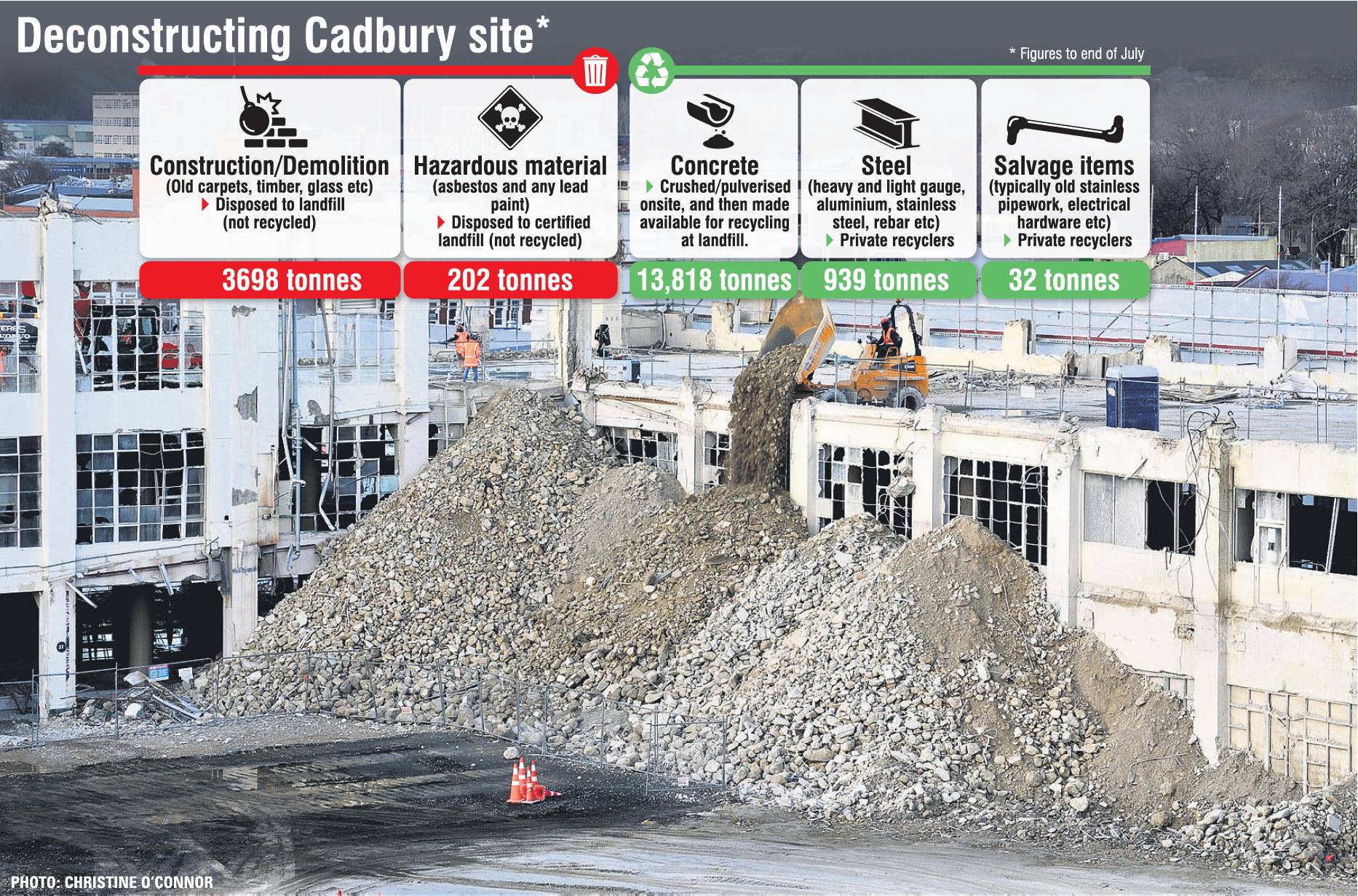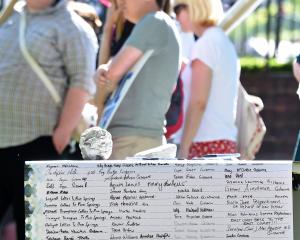Before you can build a new Dunedin hospital, you have to remove what sits on its future site. Health reporter Mike Houlahan looks at where the demolition debris from the central city sites is going.
You might not have noticed — and if you have not, demolition company Ceres is doing its job — but about 1500 truckloads of demolition waste has been cleared from the new Dunedin Hospital site so far.
A year ago, the Christchurch-based firm began levelling the northernmost of the two sites the future $1.47billion facility will sit upon.
More recently it started the more daunting task of stripping and reducing the former Cadbury factory, work which has several more weeks to run.
Long before all this happened, Ceres and its client, the Ministry of Health, had to draft and have approved comprehensive plans for how it was going to demolish the many and varied buildings on the sites.
Those hefty tomes included a traffic management plan, which mapped out exactly how those many hundreds of truckloads were to be transported through the Dunedin CBD with minimal disruption.

‘‘A couple of factors have helped us with this in terms of timing,’’ a ministry spokeswoman said.
‘‘The ‘soft strip out’ started a year ago at the former Cadbury factory, so a lot of the waste and scrap material was gone before we started the hard demo.
‘‘Now you see building structure left which is being taken down in a methodical way and this includes brick, concrete and reinforcing steel.’’
Hazardous materials such as asbestos and lead paint were carefully taken out by specialist personnel, and then disposed of appropriately by a certified landfill operator.
‘‘We pay for the removal of some waste to be made available for recycling —for example, concrete — and we on-sell other waste to landfill operators to be recycled and private recyclers, who in turn sell them on,’’ the spokeswoman said.
The concrete has, largely, been crushed on site by the excavators, before being trucked to landfill operators, who might sell it as fill to be used on other construction projects or for reclamation works.
Old brick is not being recycled as it is not a suitable structural material for fill.
‘‘We are working with a number of local companies here in Dunedin, some being Burnside landfill and Sims Metal Recycling.
‘‘Scrap reinforcing is retrieved from the pulverised concrete and crunched into balls on site and provided to the recycler, to ultimately be melted down and remade into steel goods.’’
Some of the crushed concrete still has a purpose on the demolition site though, as a pad for the landscape-dominating 74m high crawler crane nicknamed ‘‘Stretch’’.
That machine, which has already hoisted two 20-tonne excavators up to the upper storeys of the factory so they could do their damage to the higher floors, will come into its own from next weekend when, all going well, it will be used to help disassemble the distinctive Cadbury silos.
The former Cadbury factory is now a shadow of its former self, as demolition crews have reduced its facades by about half.
Behind those residual walls most of the internal buildings and walls have been levelled.
There are still several weeks worth of work left before the buildings are levelled, but some demolition questions remain unanswered, most notably whether the concrete slabs at ground level will be excavated and removed, or built on top of.
Those and other issues should be resolved shortly, as the Ministry of Health is due to lodge its building consent applications by September.
That application is to be considered by an independent arbiter as part of a fast-track consent process introduced by the Government as part of its Covid-19 economic recovery package.
Eventually, and $1.4billion dollars later, there will be a new Dunedin Hospital where now there is wreckage and debris.
The outpatient building, on the northern former Wilson car park site, is planned to open in January 2025, and its services will include day surgery and non-urgent radiology.
The factory will be replaced by an inpatient building, with its opening scheduled for April 2028.
It will house the emergency department, operating theatres and a dedicated primary birthing unit.












